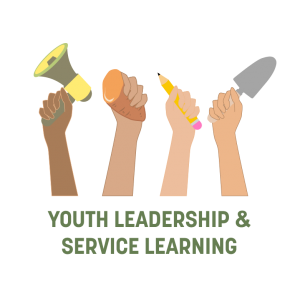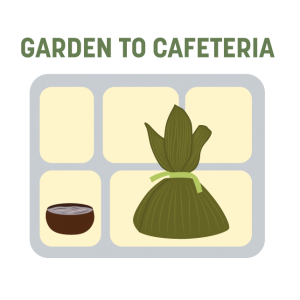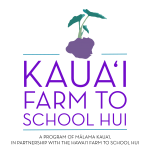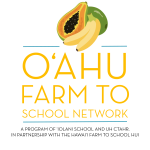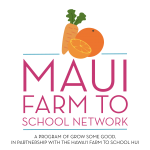The purpose of this toolkit is to improve access to experiential farm to school education for all of Hawai‘i’s students through systematic integration of farm to school programming into school culture. Based on several decades of grassroots relationship building, and successful development and piloting of Hawai‘i-based resources and professional development offerings, the Hawai‘i Farm to School Toolkit builds capacity to regenerate sustainable food systems across the pae‘āina ‘o Hawai‘i through farm to school.
Creation of the Toolkit
The Hawai‘i Farm to School Hui was awarded the USDA National Institute of Food and Agriculture (NIFA) Food and Agriculture Service Learning Program (FASLP) in 2020. The toolkit was organized in partnership with the Island Networks.
Mahalo to the Kapi‘olani Community College, Service Learning & Sustainability Program for providing technical expertise on the service learning component of the toolkit and Groundswell Services, Inc. for project evaluation.
Island Network Partners
About Hawai‘i’s Farm to School Movement
Farm to school programs involve school gardens and farms, education/curricular integration, and school food improvements through local food procurement to enhance the total well-being of students, families, schools, and community food systems.
The Hawai‘i Farm to School Hui is a statewide network founded in 2010 with a collective mission to strengthen Hawaii’s farm to school movement by supporting our Island Networks in the areas of capacity building, resource development and sharing, professional development, and policy development and advocacy. The Hawai‘i Farm to School Hui is a program of Hawai‘i Public Health Institute; learn more at hiphi.org/jointhehui.
Funding
Development of the Hawai‘i Farm to School Toolkit was supported by the Food and Agriculture Service Learning Program (FASLP) Grant No. 2020-70026-33222 from the USDA National Institute of Food and Agriculture (NIFA). Any opinions, findings, conclusions, or recommendations expressed in this publication are those of the author(s) and do not necessarily reflect the view of the U.S. Department of Agriculture.

